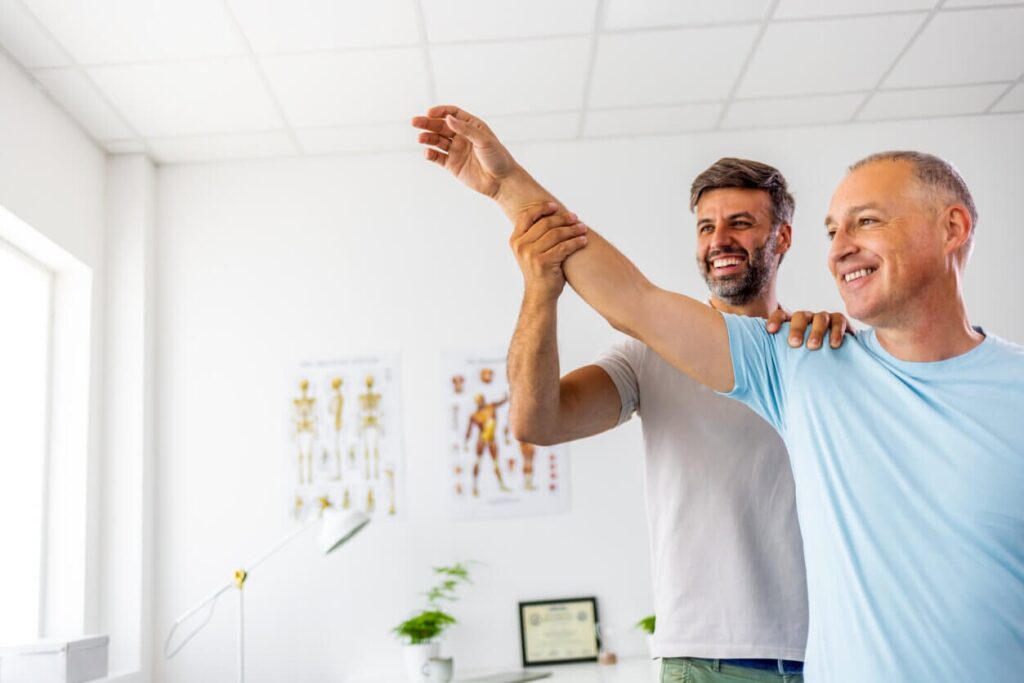In this post we discuss why exercise technique is the key to success in rehab and how you can improve yours.

See if the following experience sounds familiar to you.
Let’s say your shoulder has been hurting so you go to a physio. After an initial assessment you’re told there’s nothing seriously wrong and you’re given an exercise with a band.
You diligently perform said exercise, although you’re not sure you’re doing it right, as it seems to be making things worse rather than better.
Back to the physio you go. After some massage and the addition of bright pink tape to your shoulder, you’re sent away with more exercises.
This pattern continues with little progress. Eventually a scan is suggested to see what’s going on in your shoulder.
Despite your worst fears, the scan reveals nothing of any great significance. Certainly nothing that would require surgery.
You’re offered a steroid injection which you gladly accept as you’re getting desperate now. For a short period of time you feel better. Hoorah! But wait, here comes that annoying sensation again. Argh… Now what?
This experience becomes a bit like a game of snakes of ladders. Every time you think you’re getting somewhere, you land on a ladder and wind up close to where you started.
This scenario isn’t particular to the shoulder either, it can be played out at any joint of your body.
So why are you still in pain?
Let me take you back to that initial physio appointment and that exercise you thought you were doing wrong.
The solution, in most cases, lies in getting that right.
Now of course this isn’t your fault. Getting an exercise right can be extremely challenging, especially in the presence of pain.
There are also reasons why bands are not the most suitable equipment choice for sore shoulders.
Everything runs downstream from that initial issue however. The spiralling costs, the continued pain, and the effect this ongoing situation has on your life.
Why technique is the key to success in rehab
If there is no structural issue (and even if there is in some cases) your muscular system holds the key to progress.
How you approach it can therefore be the difference between success and failure.
That’s why technique is so important, as it increases the chances of having a positive effect on the muscles you’re targeting.
This is particularly true at the shoulder, where the amount of movement available makes it easy for your body to compensate around weak areas.
Getting the challenge right can improve your technique
You wouldn’t ask somebody who hadn’t run for a while to start with a 10k would you?
Without knowing it, this is where many practitioners ask you to start with the exercises they prescribe.
This is also why your technique suffers. If the challenge is too great, you’ll use everything at your disposal to achieve the movement, rather than the muscles you’re supposed to be targeting.
I’d go as far as to say this, along with inadequate coaching, is the number one reason why rehab fails for most people.
How to tell if you’re doing a rehab exercise correctly
Use the following checklist to assess whether the rehab exercises you’re using are having a positive effect.
- Make sure you understand what joint should be moving and which joints should be held still during the exercise.
- Only move through a range of motion you can comfortably achieve. Assess this before you start.
- Move slowly and with control.
- Ensure you know which muscles you should be working and focus on feeling the exercise in that area.
- If the exercise causes you pain, or you feel it in a joint, something is wrong. Stop and reassess.